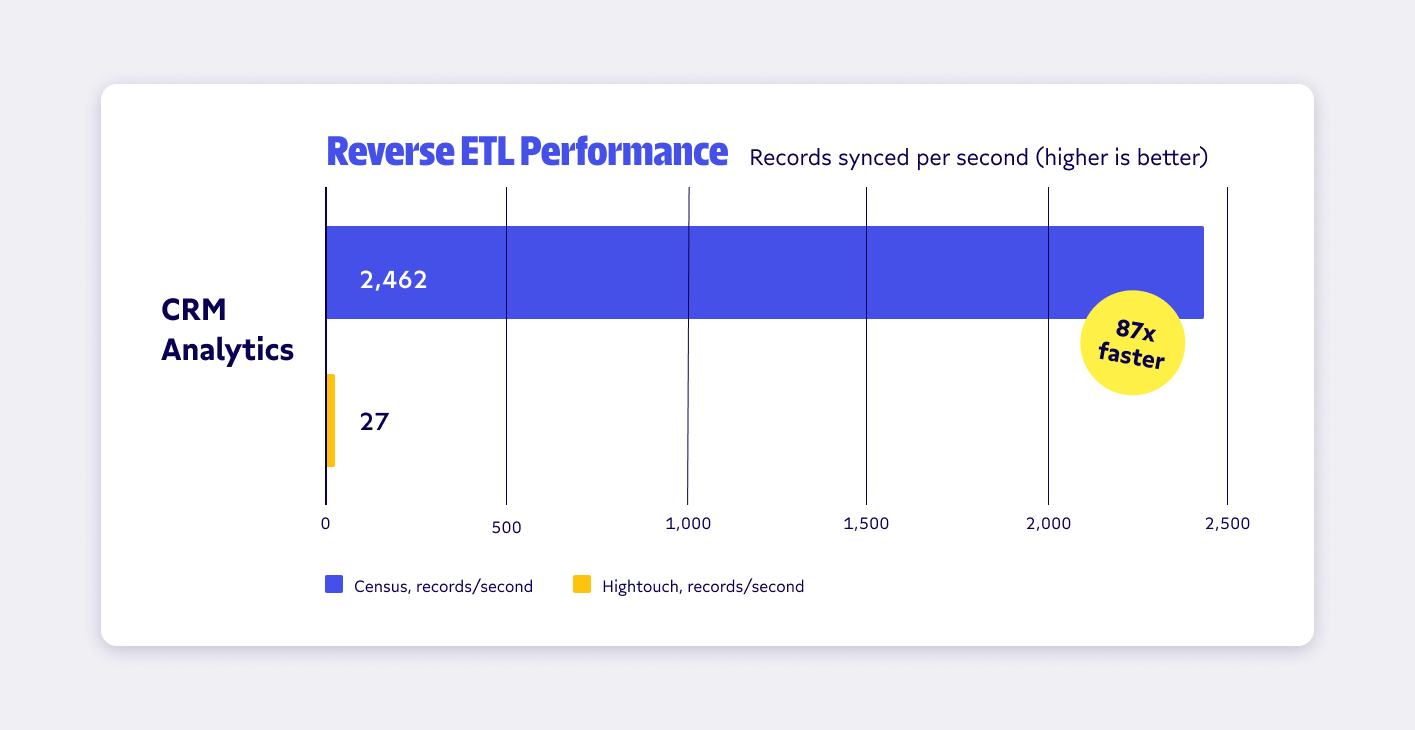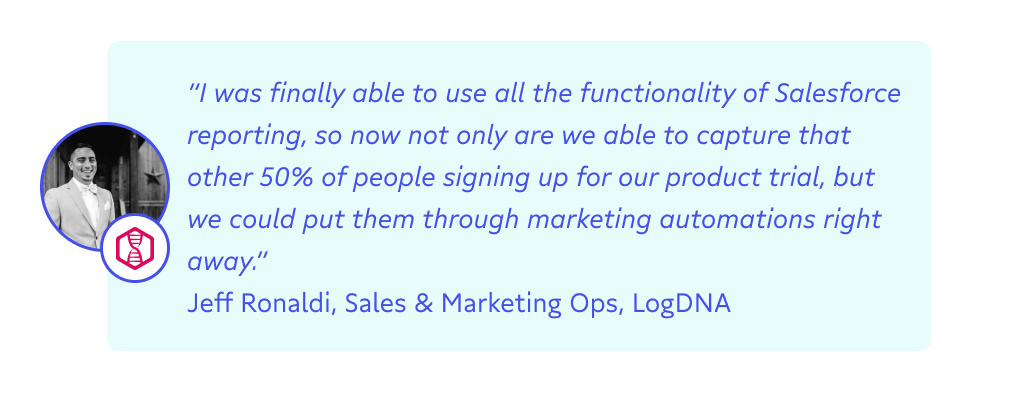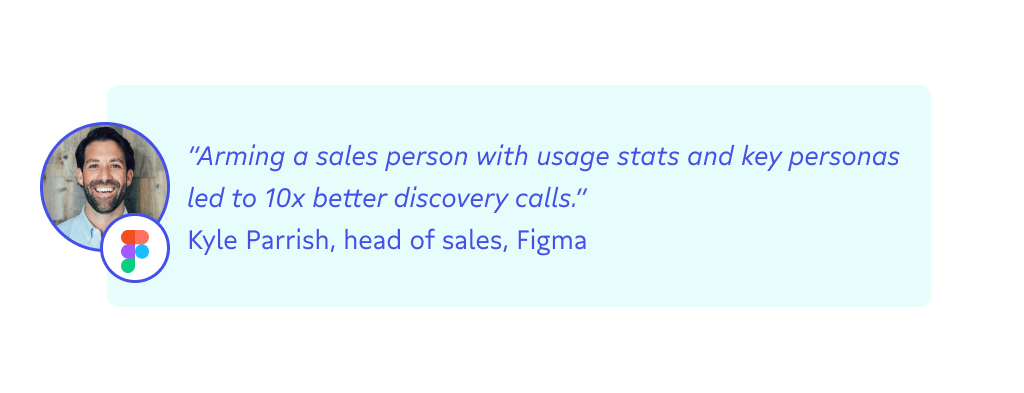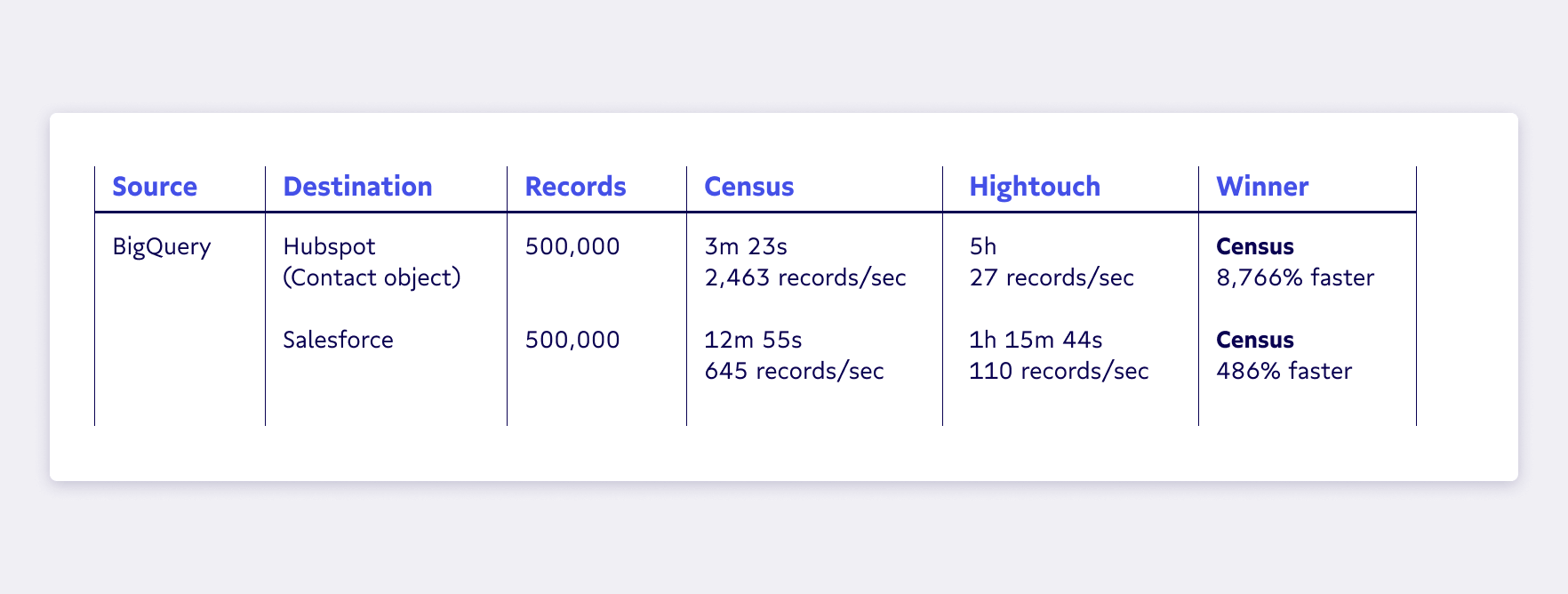In part 3 of our series on benchmarking reverse ETL tools for different use cases, we’re tackling syncing data to CRMs. Catch part 2 here, where we stress-tested Census and Hightouch on marketing syncs and found that Census was a whopping 87x faster.
Want to learn why customers chose Census over Hightouch? Check out the comparison page.
At Census, we believe reverse ETL transforms your CRM from simply a system of record into a system of action. Therefore, the faster you get data into your CRM, the faster you can take business action and engage with your customer in the right way at the right time.
Organizations traditionally viewed CRMs as a customer source of truth for the sales and marketing teams, but, in reality, these tools are often missing critical data about the customer. This matters because customers now interact with your business at more touchpoints than ever before, including through the product and via trials, support tickets, chat, webinars, and more. The only real true system of record that has all the mission-critical information about the customer you need is the data warehouse.
That’s why it’s more important than ever to sync information back to your CRM quickly. To help you find the best reverse ETL tool for the job, we’ve benchmarked reverse ETL tools for sync performance to two of the most popular CRMs (Hubspot and Salesforce).
We’ll get into the details in the following sections, but, in our testing, we found Census was up to 87x times faster than Hightouch when measuring end-to-end sync speed for reverse ETL marketing syncs for CRMs.

How reverse ETL supercharges your CRM
As we mentioned above, reverse ETL lets your sales and marketing teams spend less time parsing together decisions from incomplete data and more time taking data-informed action to better reach and serve customers.
Here are four example use cases you can unlock in your CRM with a fast reverse ETL solution in your stack:
- True customer 360. Your stack likely includes 10+ tools. Each one has data about your customers; none have the full picture. With reverse ETL, you can unify siloed data (e.g. product usage data) into a bespoke 360° customer profile that stays in sync across your whole business.
- Product-led growth. To fuel true PLG, you need to have the ability to create a unified account hierarchy and identify highly-engaged users or accounts to upsell. Fast, fresh data makes this possible, giving your sales teams a hit list of leads to pursue.
- Lead scoring. Create scoring models that combine various datasets into a single metric and sync them to all your business tools to help prioritize customers and focus on the right conversations. Some common scoring models we see are Product Qualified Leads (PQL), Marketing Qualified Leads (MQL), or Account health scores to prevent churn.
- Consistent reporting. Combine customer information, product usage, and billing in a single place to ensure accurate and consistent reporting.
It sounds cliche, but with good, fast data the use cases are truly endless. Less time going to lamenting bad data or connecting the dots between incomplete insights means your marketing and sales experts can invest their skills in high-impact, well-measured efforts to move the needle toward your core growth goals.

If you’d like to read more stories about how leading sales teams at Figma, LogDNA, and Snowplow Analytics went from good to great using reverse ETL with their CRMs check out this post.
Why speed matters for your CRMs and reverse ETL
If you’ve spent any time trying to take data-driven action from bad data and slow tools, you know that both good, but slow and fast, but incomplete data will fail you. To truly gain a competitive edge with your customers, you need access to fast, high-quality data in the tools you already rely on today.
When this magic combination happens, you open the door to a whole new world of data-informed possibilities. In this new world you can:
- Get the full, accurate picture of your customer when you need it most. With this, you can reach customers with just the right message at just the right time. Without it, you can turn a customer off of your brand forever. After all, there’s nothing worse than telling a customer the wrong information over the phone or bombarding someone with sales emails after they’ve already signed up.
- Focus on the conversations that matter. When you have all the customer data you need in your CRM, augmented with attributes like lead scores, your sales team can work more effectively to prevent churn by proactively identifying at-risk accounts and running interference.
- Fuel powerful sales automation at scale. Operationalizing data and attributes like lead scoring with sales automation workflows like lead routing dramatically improves the productivity of sales teams.
Upgrading your stack with reverse ETL isn’t just about getting data faster, it’s about making it easier than ever to take action based on that data. When you combine the power of reverse ETL and your favorite CRMs to operationalize your customer data, you unlock the true power (and talent) of your sales team.

Benchmark results for CRM tools
Below are the results from our reverse ETL benchmarking for the popular CRMs sales and marketing teams rely on today. We synced 500,000 customer records from Google BigQuery into Salesforce, Hubspot, and Pipedrive using both Census and Hightouch.
As a recap, we go deeper into the details of our testing methodology, as well as include the dataset we’re testing for your own use, in part 1 of this series.

As we saw in part two of our benchmark series, Hubspot speed opens up for real-time marketing use cases, as well as sales use cases, such as alerts for sales notifications and task creation tied to product usage (e.g. “Account just achieved important step X of their trial” or “Account is at the 90% limit of their pricing plan.”). All in all, we saw Census come out 87x faster for syncs to Hubspot than Hightouch for our dataset.
When we tested the sync performance for Salesforce, we saw results a little slower than Hubspot, but 486% faster compared to Hightouch overall, with data making it to its destination in minutes instead of hours. The difference between minutes and hours is the difference between having mission-critical information before you go on a call and going in blind.
What’s next: Stay tuned for the secrets behind our performance
We’re constantly taking stock of how we can continue to build the best reverse ETL in the market, whether you’re looking to sync data to improve marketing, sales, customer success, or event use cases. Up next, we’ll take a look at how Census stacks up for CS use cases, as well as take a deep dive into why speed matters for operational analytics and what makes Census the best built and fastest reverse ETL solution around.
If you have any questions or suggestions on how we can make this and future benchmarks useful to you, feel free to reach out and say hi at hello@getcensus.com.
For further reading, check out part 1 of our reverse ETL benchmarking series where we looked at event syncs, as well as explained our methodology and goals behind this testing, and part 2 where we looked at marketing syncs.


















